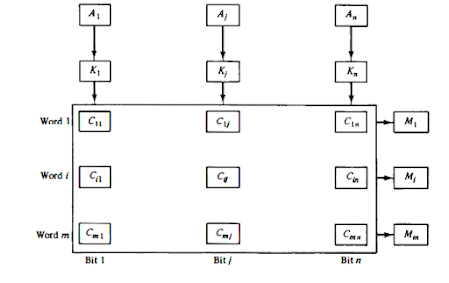Many data-processing applications require the search of items in a table stored in memory.
The number of accesses to memory depends on the location of the item and the efficiency of the search algorithm. Many search algorithms have been developed to minimize the number of accesses while searching for an item in a random or sequential access memory.
The time required to find an item stored in memory can be reduced considerably if stored data can be identified for access by the content of the data itself rather than by an address. A memory unit accessed by content is called content addressable an associative memory or content addressable memory (CAM).
When a word is written in an associative memory, no address is given. The memory is capable of finding an empty unused location to store the word. When a word is to be read from an associative memory, the content of the word, or part of the word, is specified. The memory locates all words which match the specified content and marks them for reading.
The associative memory is uniquely suited to do parallel searches by data association. An associative memory is more expensive than a random access memory because each cell must have storage capability as well as logic circuits for matching its content with an external argument.
Hardware Organization:
A 111 111 100K 111 000000Word 1 100 111 100 no matchWord 2 111 000001 match



0 comments :
Post a Comment
Note: only a member of this blog may post a comment.